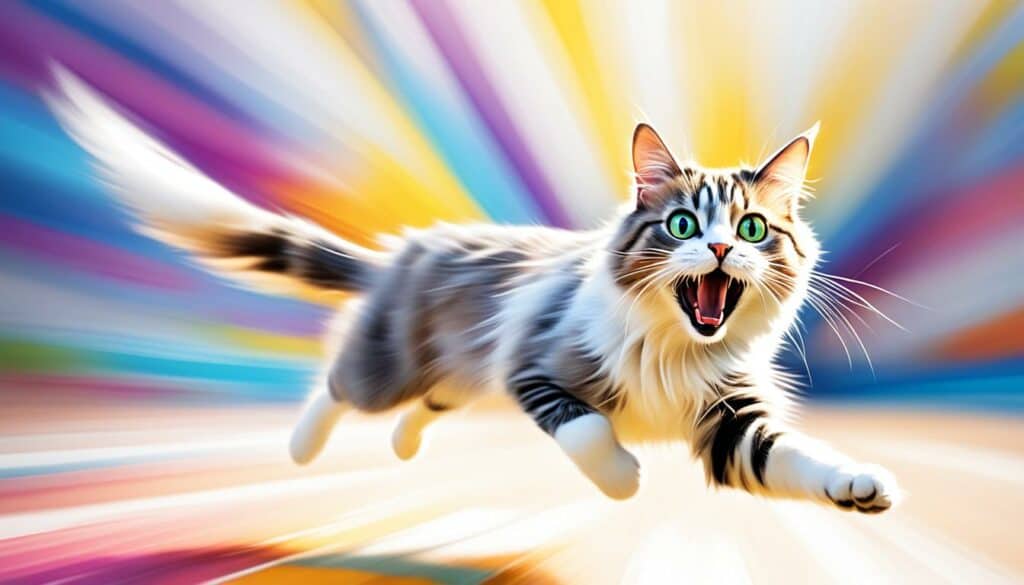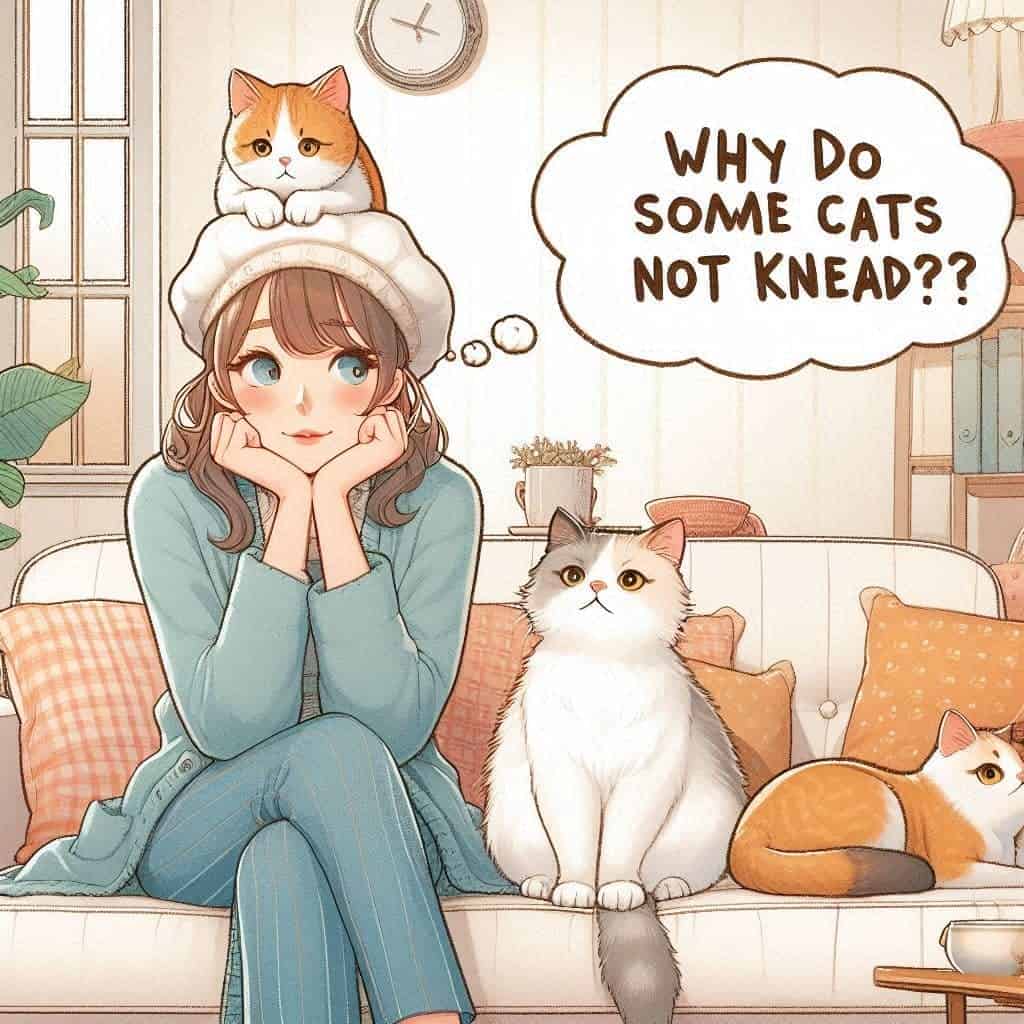Cats enjoy firm petting for many reasons e.g. sociability, grooming instincts, and sensory stimulation. Understanding a cat’s body language is key for enjoyable petting. Hard patting can strengthen the human-cat bond and provide emotional benefits for both, but respecting the cat’s preferences and individual variations is essential for a positive relationship.
As a cat owner, I’ve always been fascinated by the quirks and behaviors of my feline friends.
I’ve noticed that some cats seem to enjoy being patted hard, while others prefer a gentler touch.
Doofy always loved getting a good dosage of hard patting before his meals. 😁
It’s not uncommon to see a cat arching its back and purring loudly while being petted vigorously, even to the point where it might seem rough to us humans.
This got me wondering: why do cats like to be patted hard? Is it a sign of affection, or is there something more to it?
In this article, I’ll explore the science and psychology behind cat petting, and try to shed some light on why some cats seem to love a good, hard pat.
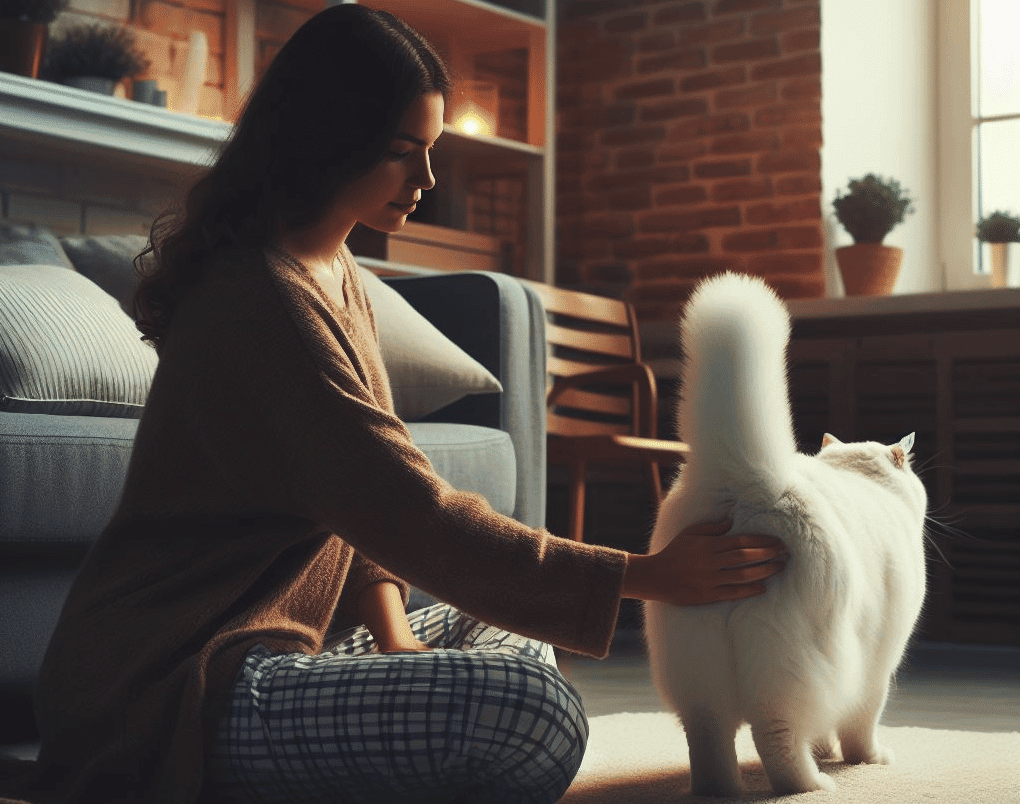
The Mysterious Appeal of Hard Patting to Felines
There seems to be a wide range of preferences among individual felines regarding hard patting. While some cats may prefer gentle strokes and soft caresses, others crave a firmer touch, even to the point of hard pats or slaps.
This mysterious appeal of hard patting to felines has puzzled many cat owners and animal behaviorists alike.
Cat Petting Techniques
It’s also important to consider the cat’s personality and preferences regarding different cat petting techniques.
Some cats may be more outgoing and social, while others may be more reserved and cautious – some may enjoy long petting sessions, while others prefer shorter, more frequent interactions.
By paying attention to a cat’s unique needs and preferences, cat owners can help build a stronger bond with their feline companion and provide them with the love and attention they crave.
Cats have a sophisticated sensory system that responds to touch and pressure, making it crucial to find the right balance between firmness and gentleness.
Experimenting with different petting styles and observing our cat’s reactions can help us determine the techniques that they find most enjoyable.
Remember, each cat is unique, so pay attention to their individual preferences and adjust our petting techniques accordingly.
Petting Technique |
Description |
|---|---|
| Gentle Stroking | Use soft, slow strokes with light pressure, focusing on areas such as the back and sides. This technique is ideal for cats that prefer a more subtle sensation. |
| Firm Pressure | Apply slightly more pressure while petting, using longer strokes along the body. This technique can provide a greater sense of sensory stimulation for cats that enjoy a more robust petting experience. |
| Focused Rubbing | Massage specific areas, such as the cheeks, chin, or base of the tail, using circular or back-and-forth motions. This technique can provide targeted sensory stimulation and relaxation. |
The Science Behind Why Cats Enjoy Hard Patting
I’ve always been fascinated by the way my Doofy responds to hard petting. Some cats seem to melt into a puddle of contentment at the first touch of a hand, while others may be more hesitant or even resistant to being petted.
But have you ever wondered what’s going on inside a cat’s body when they’re being petted?
Physical and Psychological Effects of Petting on Cats
Cats’ nervous system releases endorphins, which are natural painkillers and mood elevators when they are petted.
This can create a sense of relaxation and contentment in the cat, and may even help to reduce anxiety and stress.
In addition to endorphins release, petting can also have a calming effect on a cat’s nervous system.
The repetitive petting motion can create a soothing rhythm that helps slow the cat’s heart rate and lower their blood pressure.
This can be especially beneficial for cats prone to anxiety or stress.
But the benefits of petting aren’t just limited to the cat’s nervous system. Petting can also have a positive impact on a cat’s endocrine system.
When a cat is petted, their body releases oxytocin, which is referred to as the “love hormone.”
Oxytocin is associated with feelings of trust, bonding, and social attachment, and may help to strengthen the bond between a cat and their human companion.
How Sensory Neurons May Influence a Cat’s Love of Hard Petting
Cats have sensory neurons beneath their fur that are activated when they are stroked.
These sensory neurons are thought to be responsible for the pleasurable sensations cats experience during petting.
Hard patting may provide a stronger stimulation of these sensory neurons, leading to an increased level of enjoyment for cats.
Understanding the sociability and grooming behavior of domestic cats, as well as the role of sensory neurons, helps shed light on why cats enjoy hard patting.
It allows us to better connect with our feline friends and provide them with the physical stimulation and bonding experiences they naturally crave.
Why Some Felines Crave More Vigorous Petting
While some of my cats enjoy hard petting, others are more sensitive and prefer a gentler touch. Understanding and respecting these preferences is important in building a strong bond with your cat.
One of the key factors that can influence a cat’s response to hard petting is their personality.
Some cats may be more outgoing and social, while others may be more reserved or even shy.
Cats who are more confident and assertive may be more likely to enjoy hard petting (Doofy loves it), while cats who are more timid or anxious may be more sensitive to touch.
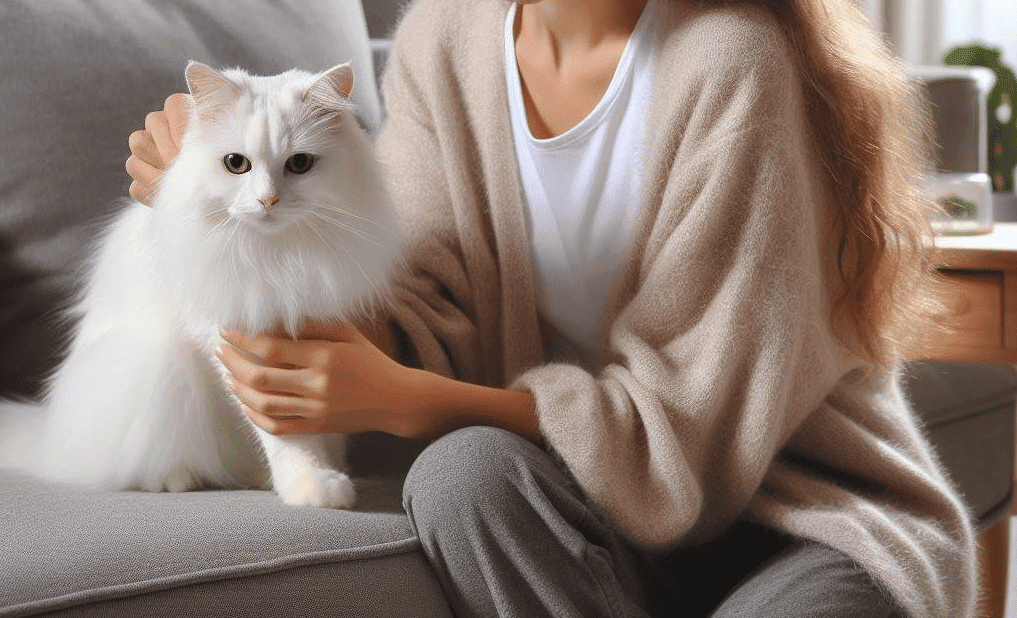
Cats with positive experiences with petting and handling may be more receptive to hard petting, while those with negative experiences may be more hesitant or fearful.
As a cat owner, it’s important to observe and respect your cat’s body language and signals when it comes to hard petting.
Some cats may show clear signs that they enjoy hard petting, such as purring, kneading, or leaning into your touch – others may be more subtle in their signals, or may even show signs of discomfort or distress, such as flattening their ears, twitching their tail, or pulling away from your touch.
If your cat seems to enjoy hard petting, it’s important to make sure you’re not being too rough or aggressive in your touch.
Always start with gentle strokes and gradually increase the pressure based on your cat’s response. And if your cat shows any signs of discomfort or distress, it’s important to stop petting them immediately and give them space.
Understanding and respecting your cat’s preferences and personality is key to building a strong bond with them.
Practical Tips for Cat Petting Techniques
Understanding the art of petting your cat can significantly enhance your bond. While cats may seem independent, they too crave affection but on their terms.
Remember, each cat is unique, so observe and adapt to their preferences. Hard patting isn’t typically recommended, but some cats may enjoy a firmer touch, especially during playtime.
Always introduce new petting techniques gradually and respect your cat’s reactions to ensure a positive experience for both of you.
Best Practices for Initiating Hard Petting with Your Cat
To initiate hard petting with a cat, it is important to approach them with a calm and gentle demeanor.
Start by gently stroking the head and gradually increase the pressure as long as the cat continues to show signs of enjoyment.
It is important to respect the cat’s boundaries and stop if they show any signs of discomfort or resistance.
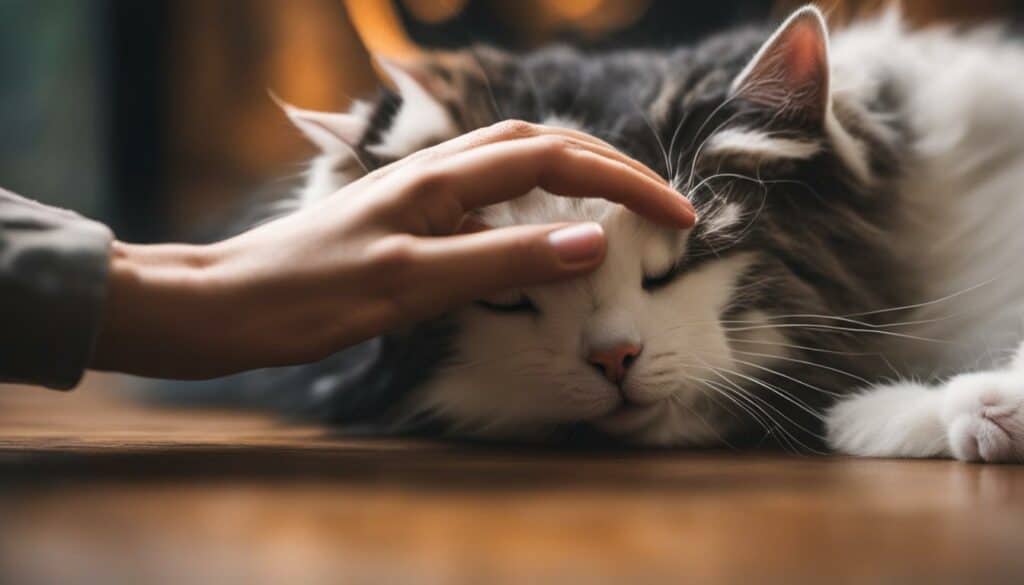
Recognizing the Signs When a Cat Has Had Enough Petting
Cats have limits when it comes to getting petted, and pet owners must recognize the signs that indicate a cat has had enough.
These signs may include tail flicking, flattened ears, or attempts to move away.
Respecting the cat’s boundaries and stopping petting when they show signs of discomfort is essential for maintaining a positive and trustful relationship.
Signs That Indicate a Cat Has Had Enough Petting |
|---|
| Tail flicking |
| Flattened ears |
| Attempts to move away |
Benefits of Hard Patting for Cats
Here are some potential benefits of hard patting, when done correctly and in response to your cat’s cues:
- Stimulates Blood Circulation: Hard patting can stimulate blood circulation, resulting in a healthier coat and skin. It can help distribute natural oils produced by the cat’s body, contributing to a shinier and healthier-looking coat.
- Releases Pent-Up Energy: Cats, especially more active breeds, can have a lot of pent-up energy. Hard patting, often rhythmically and playfully, can help release this energy, serving as a form of interactive play.
- Strengthens Bond: When done in a way your cat enjoys, hard patting can strengthen the bond between you and your pet. It’s a positive interaction that builds trust and deepens your relationship.
- Provides Mental Stimulation: The unpredictable nature of hard patting can provide mental stimulation for your cat, keeping them alert and engaged.
However, always try to monitor your cat’s response to hard patting.
If they show signs of discomfort or stress, such as flattened ears, tail twitching, or attempts to move away, it’s time to revert to gentler strokes.
Always prioritize your cat’s comfort and well-being in your interactions.
Here are some signs to look out for:
- Signs of Enjoyment: Purring, leaning into your touch, slow blinking, or relaxed body language.
- Signs of Discomfort: Flattened ears, tail twitching or lashing quick or sharp movements, attempts to move away, or changes in vocalization.
You can gauge your cat’s enjoyment during hard patting by recognizing the signs of pleasure, such as purring, slow blinking, and relaxed posture.
Knowing the areas cats enjoy being petted the most, such as the head, cheeks, neck, and chin, allows pet owners to provide optimal sensory stimulation.
So, next time you reach out to pat your cat, remember their personal preferences and enjoy the special bond from this unique form of feline affection.
Useful Reads
- https://thecatsite.com/c/do-cats-like-to-be-petted/
- https://whatyourcatwants.com/pettingprefs
- https://groups.google.com/d/topic/rec.pets.cats/xXyYKiTL0Dw

In her previous life, Lisa traveled extensively, both for work and leisure. After the pandemic struck, Lisa locked up her luggage and adopted a cat ever since.
Lisa is now an avid cat lover, she devotes most of her free time serving as butler to her adorable feline at home. When she is not with her cat, she can be seen using her phone sourcing for the latest cat supplies online.

